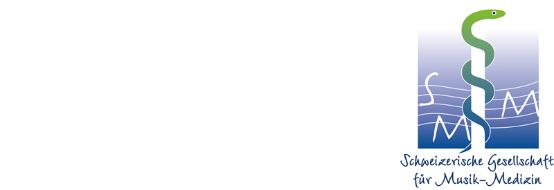Performing Arts Medicine Association Musicians' medicine worldwide
At the Pama Conference (Performing Arts Medicine Association ) in New York City, experts discussed current issues in musicians' medicine.

SMM - The Performing Arts Medicine Association (PAMA) was founded in 1988 by a group of physicians who had previously worked in isolation on the health problems of musicians and dancers.
The first contacts were established back in 1983 at a symposium on the health aspects of music-making in Aspen (Colorado). The first joint publication platform was subsequently created in 1986 with the specialist journal "Medical Problems of Performing Artists". The symposium and journal were largely shaped by Alice Brandfonbrener, the founding president of PAMA.
Around a fifth of PAMA members now come from outside the USA. In addition to doctors, these now include other healthcare specialists as well as artists, administrators and educators.
Martina Berchtold-Neumann - Thanks to the generous support of the SIS (Swiss Performers' Foundation), the author was able to attend the Pama conference in New York in July of this year. Pama is an organization that looks after the interests of performing musicians and dancers. The focus is on the prevention and treatment of health problems. All medically relevant specialist areas, in addition to psychological sciences and physiotherapy with related procedures, are included in research and teaching. The members of Pama are spread all over the world. Around 400 participants, mainly from the USA and Canada, but also from Australia and Europe, attended the four-day congress. The congress focused primarily on musicians' medicine. Dance medicine was integrated.
The organizers' self-imposed goal was for the participants of the conference to gain a comprehensive overview of the current state of research in musician's medicine and also to be able to take practical tools from the workshops back into their daily practice. This goal was achieved. There were countless lectures to choose from, usually every 15 minutes, which were held in parallel in three lecture halls. The lectures were intended as inputs, so that the topics could then be studied in greater depth later on. There were also parallel 45-minute workshops. It was therefore not easy to choose what was important to you from the consistently appealing contributions. Unfortunately, some interesting sessions were also missed.
The bottom line is that musicians' medicine is at roughly the same stage of development in all the countries represented. Both the problems and their solutions are roughly comparable. The research questions and scientific settings are also structured in a similar way.
The contributions included studies on musculoskeletal disorders, physiological studies on string and wind instrument maintenance, hearing, the psychological issues of anxiety and stress and suitable physiotherapeutic treatment. The majority of the relevant studies focused on the pain experienced by musicians. This also appears to be a major topic in musicians' medicine internationally, as we already know from the studies here. Of course, American topics in particular were also touched upon, such as the poverty of the "New Orleans jazz musicians" in general and in particular after Hurricane Katrina. In New Orleans, for example, a clinic was set up by sponsors in which jazz musicians are treated free of charge, as they are generally not covered by health insurance due to poverty.
The science of musician's medicine is still very young and is characterized by the pioneering achievements of those involved. One has the feeling that a science with a lot of passion has emerged from the often individually justified interest of the participants and is continuing to develop. The work and research here is practice-oriented. Solutions are sought for artists so that they can pursue their profession in a better and healthier way. Due to the increasingly competitive music business, this research and its application in practice is absolutely essential. Our efforts to work in the field of musicians' medicine were confirmed. It was nice and motivating to see that there are colleagues all over the world who also represent our cause and are willing to enter into a collegial exchange in order to learn from and with each other. Many thanks to the SIS and to all our fellow campaigners with their great commitment to the SMM.
Martina Berchtold-Neumann
... is President of the SMM, qualified psychologist, Stein am Rhein








